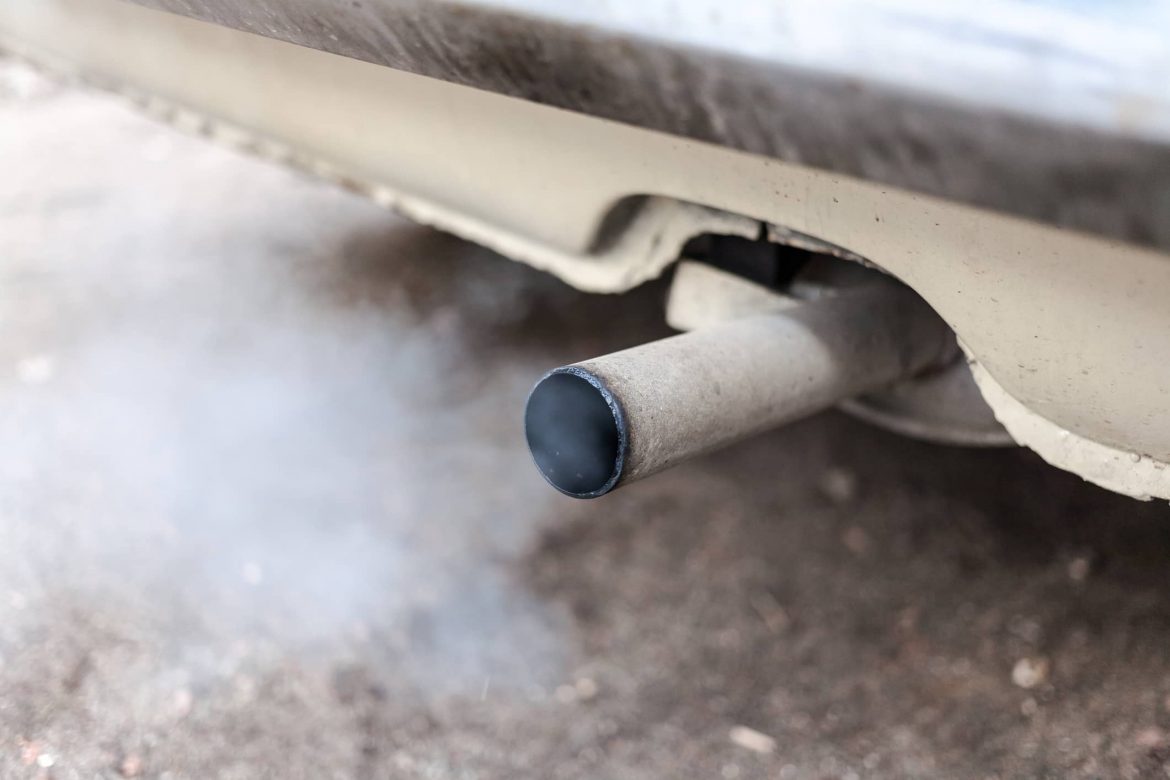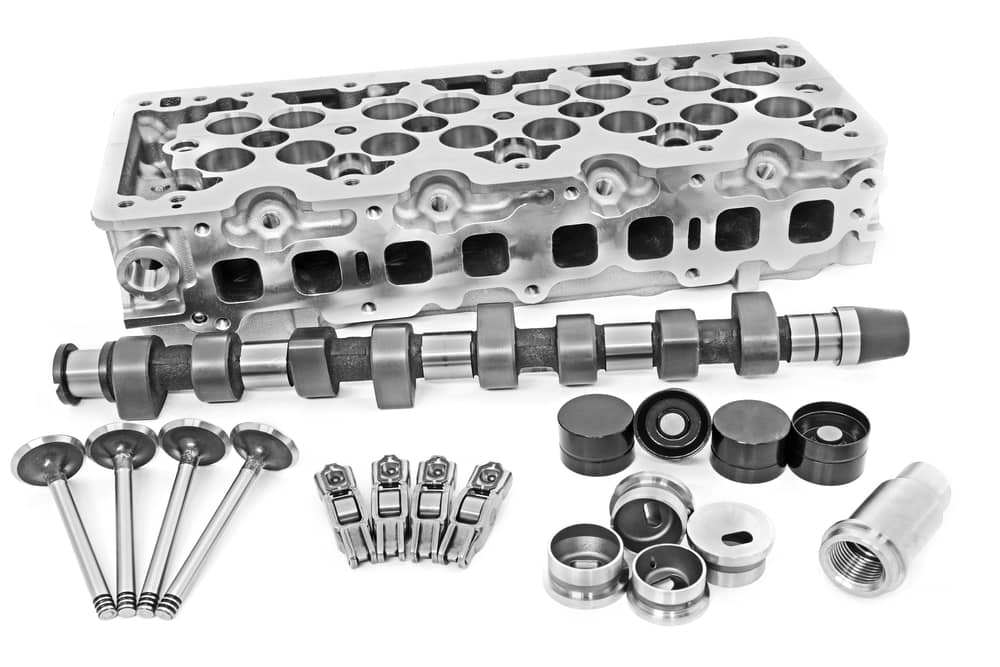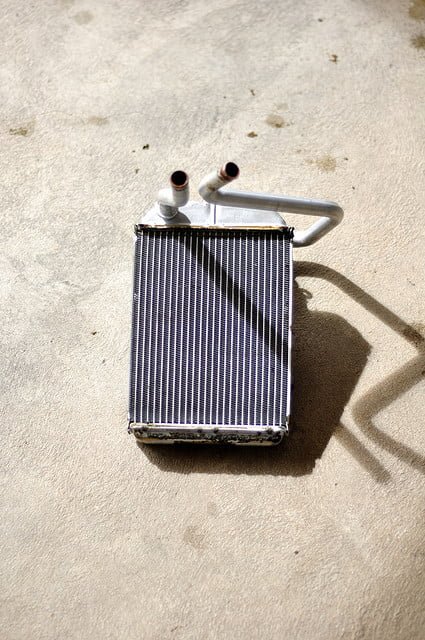 A head gasket leak can often be very difficult to diagnose. If you have a very large head gasket leak and your car won’t even start, it can be very hard to check for a leak. On the other hand, if your head gasket leak is very small your vehicle may run normally with the exception of occasionally overheating. In this article, we will address both situations to help you diagnose your head gasket leak.
A head gasket leak can often be very difficult to diagnose. If you have a very large head gasket leak and your car won’t even start, it can be very hard to check for a leak. On the other hand, if your head gasket leak is very small your vehicle may run normally with the exception of occasionally overheating. In this article, we will address both situations to help you diagnose your head gasket leak.
Head Gasket Leak Symptoms if Your Car Won’t Start:
- The vehicle has recently overheated
- Bubbles in the radiator overflow or expansion tank during cranking
- Low compression
- Wet spark plugs
Overheating
The most common cause of catastrophic head gasket failure is if your vehicle overheats. Newer vehicles have cylinder heads made from aluminum which expands rapidly when overheated. This quick expansion can destroy the head gasket or warp the cylinder head enough to allow coolant to slip past the head gasket. If your car has recently overheated to the point where the temperature gauge was reading at the top end of its scale, and now your vehicle won’t start, it is likely you have a head gasket leak
Bubbles in the Coolant
If you’ve got a large enough head gasket leak that your engine won’t start it could be that one or more cylinder isn’t building any compression and that is causing it not to start. The compression these cylinders would usually build is allowed to leak out into your cooling system through the head gasket leak. You would observe this as bubbles in your coolant either in the radiator or the expansion tank. This would also cause your coolant to smell like gas since it is the air/fuel mixture that is being pushed into your cooling system as your engine is trying to start.
Low Compression
This same problem will cause low compression in one or more cylinders which you can check with a compression gauge attached to your spark plug port. Usually, head gasket leaks show up in 1 or 2 cylinders not all of them, so comparing the compression readings from different cylinders and different banks can tell you which cylinder has the leak.
Wet Spark Plugs
When you remove the spark plugs to do the compression test, you may find one or more to be wet with coolant. If your engine won’t start, it won’t get hot enough to burn the coolant off of the spark plugs. If you have coolant on your spark plug then you definitely have a head gasket leak.
If you’ve got a head gasket leak so big you cannot get your engine to run, it’s time to take it to a mechanic to have it checked out and the head gaskets replaced.
Head Gasket Leak Symptoms if Your Car Runs:
- Random overheating
- Mysterious loss of coolant
- Milky oil
- Exhaust gases in your coolant
Random Overheating
If you’ve got a small head gasket leak it will cause your car to overheat but not all the time. The overheating is often due to a loss of coolant but can also be due to the extra heat the head gasket leak is adding to your cooling system. If your car overheats you can try checking the operation of your thermostat and radiator cooling fans along with the coolant level. If everything seems to be working properly, the overheating may be due to head gasket leak.
Mysterious Loss of Coolant
Usually, coolant leaks are relatively easy to find as the coolant will leave behind evidence of the leak. After the coolant dries it will leave white spots around the leak point making it easy to identify. If your vehicle requires you to top off the coolant system often and you can’t seem to find any coolant leaking anywhere, it’s possible you have a slow head gasket leak and the coolant is actually being drawn into your engine and burned. You can try pressure testing your cooling system and looking for any external leaks. If you don’t find any, try leaving the pressure on the system for over an hour, then starting your vehicle and checking for a puff of white smoke. That would indicate a small amount of coolant had leaked into the combustion chamber during the pressure test.
Milky Oil
A small head gasket leak will allow coolant to leak into the combustion chamber after your turn your engine off. This coolant will seep past your piston ring into your engine oil. When the oil and water mix it will make a white paste that you may be able to see on your dipstick, around the bottom of your oil cap, or in your oil if you do an oil change.
Exhaust Gases in Your Coolant
If you’ve got a small head gasket leak exhaust gases will slowly build up in your coolant during the combustion and exhaust stroke of your engine. You may be able to smell them in your coolant, but there is also a chemical test kit available to check for a blown head gasket. If the chemical test comes back positive, you definitely have a blown head gasket.
If you have a head gasket leak small enough that your engine still runs, try using BlueDevil Head Gasket Sealer to seal your leak and get your vehicle back to running like normal.
You can find BlueDevil Head Gasket Sealer at any of our partnering local auto parts stores like:
- AutoZone
- Advance Auto Parts
- Bennett Auto Supply
- CarQuest Auto Parts
- NAPA Auto Parts
- O’Reilly Auto Parts
- Pep Boys
- Fast Track
- Bumper to Bumper Auto Parts Specialists
- S&E Quick Lube Distributor
- DYK Automotive
- Fisher Auto Parts stores
- Auto Plus Auto Parts stores
- Hovis Auto & Truck Supply stores
- Salvo Auto Parts
- Advantage Auto Stores
- Genuine Auto Parts stores
- Bond Auto Parts stores
- Tidewater Fleet Supply
- Bumper to Bumper Auto Parts
- Any Part Auto Parts
- Consumer Auto Parts
Pictures Provided By:
head_gasket_leak.jpg – By Comosaydice – Licensed by Getty Images – Original Link
BlueDevil Products can be found on Amazon.com or at AutoZone, Advance Auto Parts, O’Reilly Auto Parts, NAPA, and other major auto parts retailers.
18 responses to "Do I Have a Head Gasket Leak?"
18 Comments
Leave a Reply
Related Articles




Will this fix my head gasket leak if my heater fan doesn’t work?
Jonathan-
Are you experiencing overheating at all? As long as the vehicle will maintain idle for a full 50 minutes, without overheating or stalling out, and you are not losing more than about a quart of water/coolant during that 50 minute run, you would be a good candidate for the product.
Thank you!
-BDP
I used blue devil professional a week ago 91 civic. Followed directions to a tee. No more bubbles in my rad no coolant loss no oil in coolant or coolant in oil no overheating but I still have water droplets and a ton of smoke coming out of tailpipe just wondering if it’s just the blue devil making it way out of the system. Thanks
Tom-
Thank you for asking about your Honda Civic. After using the BlueDevil Head Gasket Sealer, smoke coming from the tailpipe can take several hours to completely dissipate before completely clearing itself out. You can run it intermittently or even just let it sit there and idle to allow it enough time. If the smoke continues, please contact our technical support line at 888-863-0426 so that we can better assist you.
Thank you!
-BDP
August 2018, relatives up for visit from San Antonio, head gasket failed with intermittent overheating and blowing coolant from pressure cap on 2013 dodge. Emergency , they needed to get the vehicle back, I used your Blue Devil Head gasket sealer, It was difficult to get it into the system properly due to a totally closed system with no Rad cap. But it did the trick! The car made it all the way back (about 1200 miles0 and working fine. no overheating or coolant loss the entire trip. Should we now flush and refill with proper antifreeze?
Darrell-
We are glad to hear about your excellent results! Once the product seals, it would be a permanent seal, so the vehicle should be good to go at this point. It would be fine to drain the system and re-fill it with the regular 50/50 mix. We appreciate you sharing your experience.
Thank you!
-BDP
I added blue devil gasket leak to my reservoir will it work. Or will I have done damage.
Eveline-
If your vehicle only has a reservoir/overflow rather than a radiator cap, instead of pouring BlueDevil through the reservoir/overflow, with the car off and engine cold you should disconnect the top radiator hose and add the product there; do not pour it into the reservoir. It may be added into the hose or the opening on the radiator. Once BlueDevil has been added, reconnect the hose and start the idle from that point.
Adding the product in through the reservoir is essentially adding the product when the engine is hot, as it not going to pull from there right away. The product would start reacting before it started circulating, so flushing the cooling system may be required at this point. Feel free to contact our technical support line at 888-863-0426 with any other questions.
Thank you!
-BDP
Do I need to drain the oil and the radiator and out new oil and coolant in before or after I use blue devil radiator and block seal if my oil is a little bit milky and my radiator has only water in it?
Tracie-
If you are getting water/coolant into the engine oil, you would want to change the oil before and after the BlueDevil procedure. Also, any dirty or clogged cooling systems should be chemically flushed prior to adding BlueDevil. Feel free to contact our technical support line at 888-863-0426 with any other questions.
Thank you!
-BDP
My car currently overheats, and I’m pretty sure its a head gasket failure. It overheats every time I leave it running, and when I leave the reservoir cap off when the car is idling, the coolant level rises to the top and starts to overflow. I can visibly see some fumes rising out of the top of the reservoir. I’m pretty sure this is exhaust gases entering the cooling system.
It’s a 4 cylinder engine, and I can remove the thermostat if necessary. It has a 7.5 L cooling system capacity, so I only need 16oz of sealer. Is the 32oz bottle (yellow label) more powerful than the 16oz bottle (white label)? Or are they the same mixture in different amounts? Which should I use?
Adarsh-
You may use either of the two Head Gasket Sealers that we manufacture. The “Pour N Go” (16 oz./white label) is a less concentrated formula that does not require the removal of the thermostat or a flush of the cooling system prior to use. Whereas the “Mechanic Approved” (32 oz./yellow label) requires both the removal of thermostat and a flush before applying the product; the 32 ounce is the more concentrated formula.
The product with the yellow label will give you best overall results as long as you can remove the thermostat and flush the system prior to use. With the use of either product, be sure to follow the guidelines for the proper amount to use. Based on your cooling capacity you will be applying 16 ounces of BlueDevil either way.
It sounds like you may be getting combustion/exhaust gases blowing into the cooling system and creating pressure. To give yourself the best overall chance of BlueDevil working successfully is to remove the spark plug from the cylinder with the leak; this will be the spark plug from the cylinder with the low compression reading. If you are not sure which one that is, you may pull all of the spark plugs and will notice one will have a white-crystal-like substance on it and/or may look dirty; this is the plug you should pull. Leave the plug out for the 50 minute idle in order to relieve the pressure from building up and thus allowing the product to seal properly.
Thank you!
-BDP
My car is running but it shakes and makes a noise and when I drive it doesn’t wanna take off as much I was told by the pep boys its a small leak.how can I fix this?
Tiffany-
Please contact our technical support line at 888-863-0426 so that we can get a little better understanding of the vehicle’s condition and be able to make any appropriate recommendations.
Thank you!
-BDP
I poured the blue devil in the top hose back into the motor. What should I do?
Nate-
Do not start the engine if you have added the BlueDevil Head Gasket Sealer into your engine oil. As long as you haven’t run the vehicle, and the engine was cold when you added it, you should be able to have the oil changed and the product removed. Please contact our technical support line at 888-863-0426 with any other questions.
Thank you!
-BDP
The radiator hose back to motor
Nate-
The upper radiator hose would lead directly into the radiator. Feel free to contact our technical support line at 888-863-0426 with any other questions.
Thank you!
-BDP